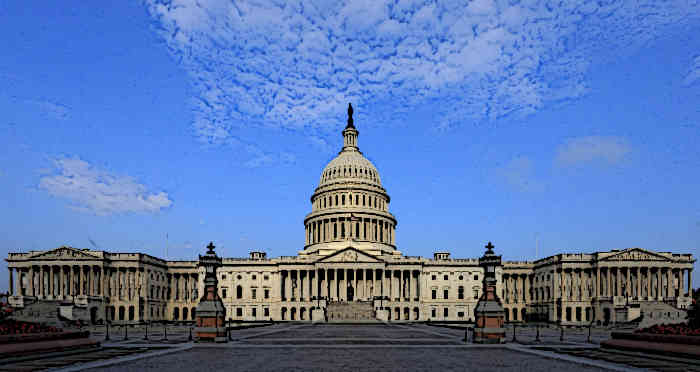Capitol Building
The United States Capitol is the seat of the United States Congress. It is also regarded as the home of the legislative section of the United States government.
Introduction
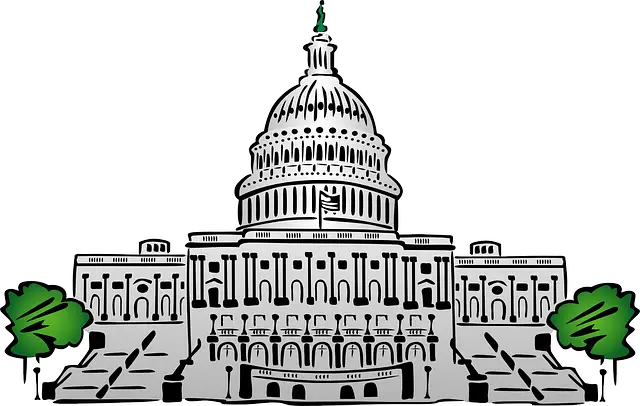
The building was originally constructed in 1900 but has since been reconstructed and expanded several times.
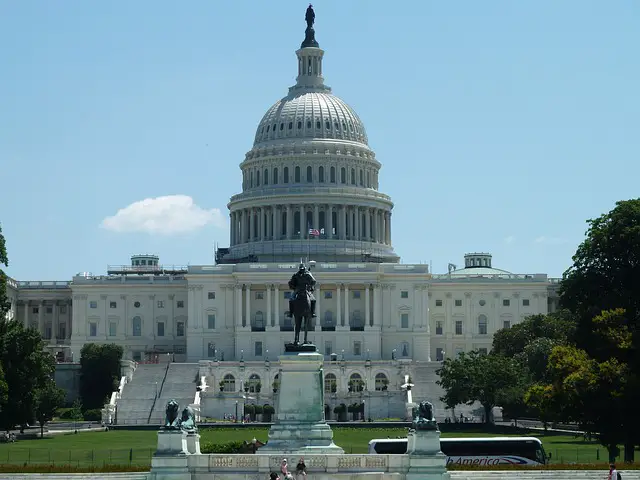
Background
After the American Revolutionary War, the United States was born. The U.S. Congress was initially called the Congress of the Confederation.
At the time, it had no permanent place to meet. In 1789, the U.S. Congress was formally established and took New York as its temporary seat.
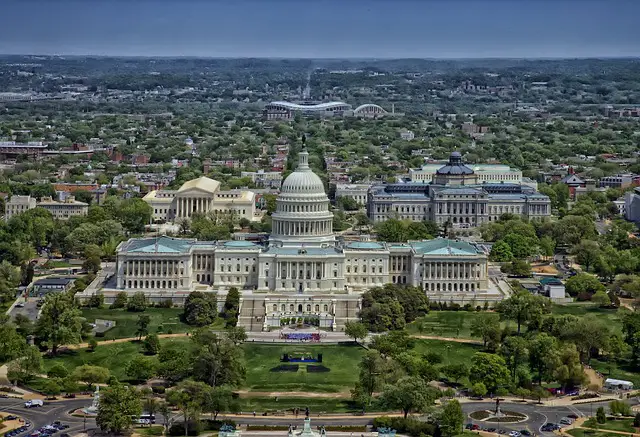
At the same time, efforts were launched to find a permanent home for Congress. These ultimately culminated in the selection of Washington D.C. as the permanent meeting place of the legislative body. Designs were solicited from different architects for the building.
Naming
The Capitol building was originally planned to be called the ‘Congress House’. However, Thomas Jefferson modified the name to ‘Capitol’ – The word Capitol is derived from the Capitoline Hill in Ancient Rome.
The Hill was home to the Temple of Jupiter Optimus Maximus. Ultimately, the building came to be called the ‘United States Capitol’ after adopting the suggestion of Jefferson.
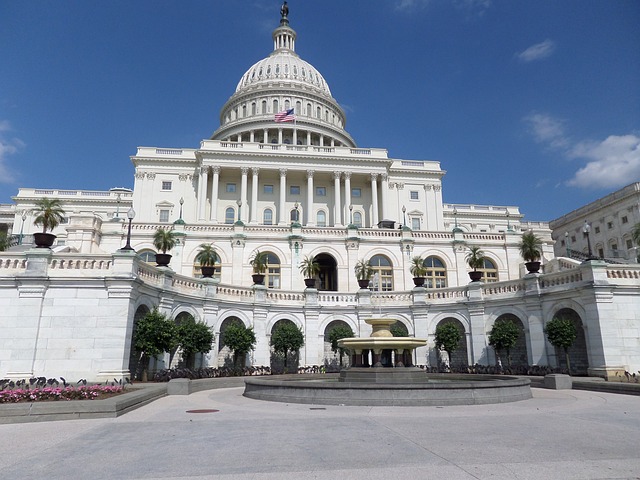
Designing the Building
The design of the building took a considerable time to finalize. Thomas Jefferson decided to hold a design competition in 1792 for the Capitol Building.
None of the originally submitted designs were considered decisively good. It was only later that a design submitted by William Thornton earned praise from George Washington, Thomas Jefferson as well as others.
Ultimately, Thornton worked together with some other designers, such as Stephen Hallet, during the construction of the building.
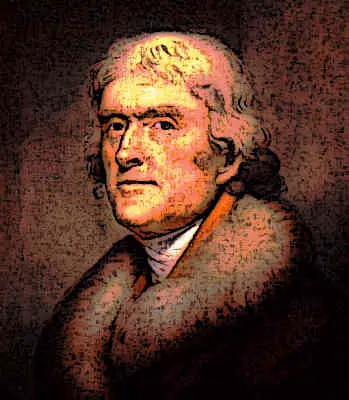
Construction
Construction of the Capitol Building began in September, 1793 when President George Washington laid the cornerstone. The construction continued for the next few years.
By 1800, the northern wing of the building, today regarded as the Senate wing, was completed. The House of Representatives wing, or the southern wing, was completed in 1811.
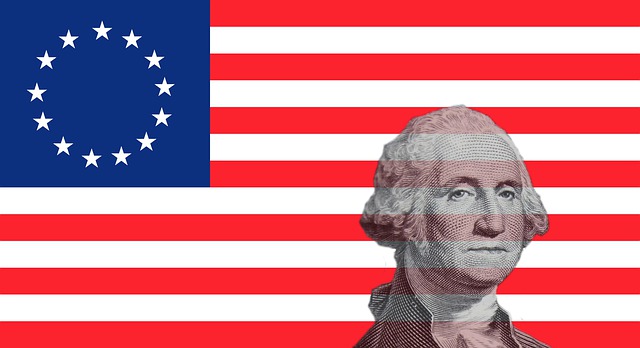
War of 1812
Only a year after the completion of both wings of the Capitol Building, the War of 1812 began. This war was fought between Britain and the United States. During the war, the British troops were able to march on to Washington and torched several buildings, including the U.S. Capitol.
A swift rain prevented the building from incurring too much damage. Reconstruction efforts began in 1815 and much of the original structure was restored by 1819.
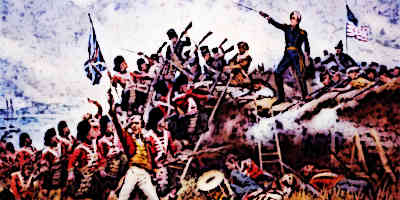
History
The U.S. Capitol building underwent a number of reconstruction and expansion efforts during the course of its history. As the number of legislators increased, the size of the building became inadequate to accommodate all of them.
During the 1850s, two new wings were added to the building. One of the most significant additions to the structure also came around this time when the iconic Capitol dome was added to the building.
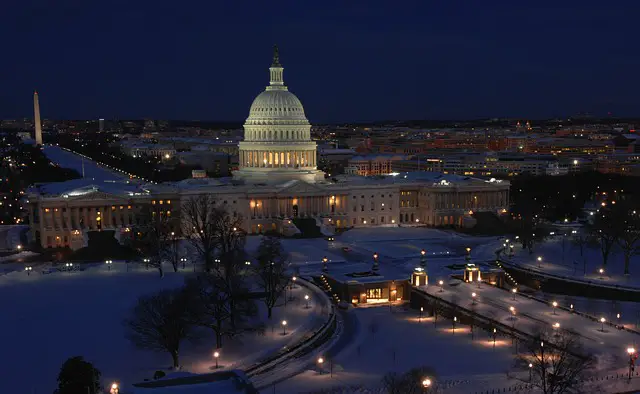
The Capitol Dome
The most recognizable feature of the U.S. Capitol is the Capitol dome. The original structure of the building was home to a smaller dome that was added in 1818.
When the building underwent an expansion in the 1850s, the older dome looked too small in contrast to the overall size of the building.
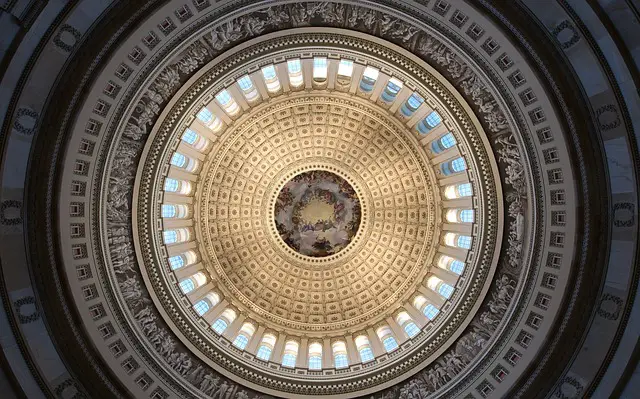
So a decision was taken to tear down the older dome and construct a new one in its place. The wedding-cake-style dome was constructed from cast iron and had a diameter of nearly 100 feet. The same dome still adorns the top of the structure after having undergone significant renovations over the years.
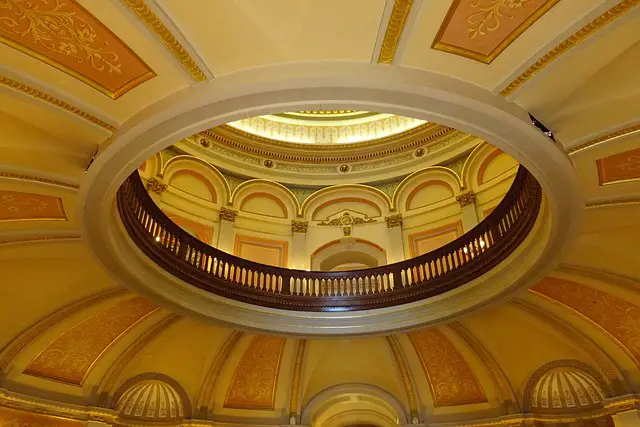
Architecture
The Capitol Building features neoclassical-style architecture. Its plain white exterior has evoked grandeur, simplicity, and nobility over the centuries. The building sits inside expansive grounds that sprawl over 274 acres.
The Capitol Rotunda
The Capitol Rotunda is a circular room that is situated directly under the Capitol dome. The room has a stunning interior, rising to a height of 180 feet with a circular diameter of 96 feet.
The design of the Rotunda was inspired by the ancient Roman temple of the Pantheon.
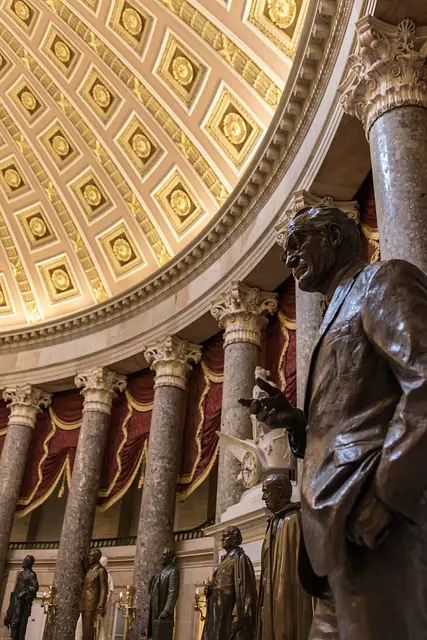
The canopy of the Rotunda features the iconic painting ‘The Apotheosis of Washington. Other paintings and frescoes adorn the walls of the Rotunda while the room is also home to the statues of many notable individuals in American history.
The Brumidi Corridors
The Brumidi Corridors are a stunning interior section of the U.S. Capitol building. The corridors are located in the Senate wing of the building which was constructed in the 1850s.
Although the corridors were originally meant to feature plain white interiors, it was later decided to have decorative wall paintings all along the corridors.
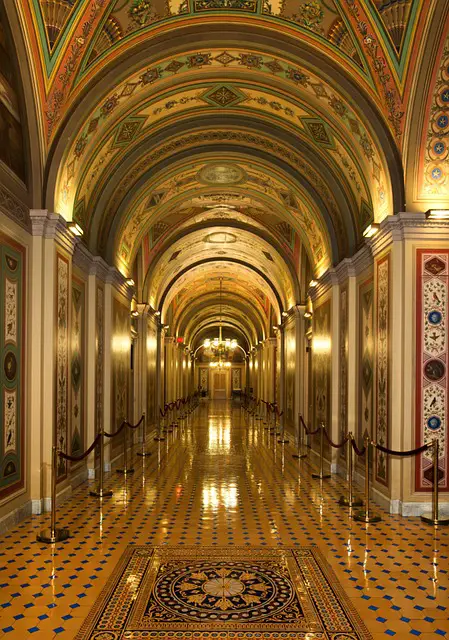
Constantino Brumidi, a noted artist, used his extensive training in various art styles to adorn the corridors with beautiful paintings, decorations, symbols, and other motifs.
The Brumidi Corridors run along five different hallways in the Senate wing. These include the Main Corridor, the West Corridor, the Inner Corridor, the North Corridor, and the Patent Corridor.
Art in the U.S. Capitol
The U.S. Capitol building is noted for being home to some of the most iconic pieces of American art. Much of this artwork was done or supervised by Constantino Brumidi after whom the Brumidi Corridors are named.
Within the Rotunda, important pieces of art include the famous painting ‘The Apotheosis of Washington’ and the Frieze of American History.
Other famous paintings in the Rotunda include The Baptism of Pocahontas, The Discovery of the Mississippi, The Embarkation of the Pilgrims, The Landing of Columbus, and a score of others.
Important Events at the U.S. Capitol
Being the seat of the federal legislative bodies, the Capitol is home to a number of important events every year. The presidential inaugurations for the elected presidents are also held at the building every four years.
Other annual events at the Capitol include the National Memorial Day Concert and the Independence Day celebrations. To lie in the Capitol Rotunda upon their death is an honor awarded to noted individuals.
Learn more about the Capitol building at Wikipedia
- Famous American Buildings
- Capitol Building
- Central Park New York
- Chrysler Building
- Empire State Building
- Flatiron Building
- Golden Gate Bridge
- Grand Central Terminal
- Jefferson Memorial
- Lincoln Memorial
- Memorial Statues
- One World Trade Center
- Statue of Liberty
- Top 10 American Buildings
- Top 10 American Memorials
- Top 10 American Skyscrapers – Awe Inspiring
- Wall Street
- Washington Monument
- Washington National Cathedral
- White House
- Willis Tower

